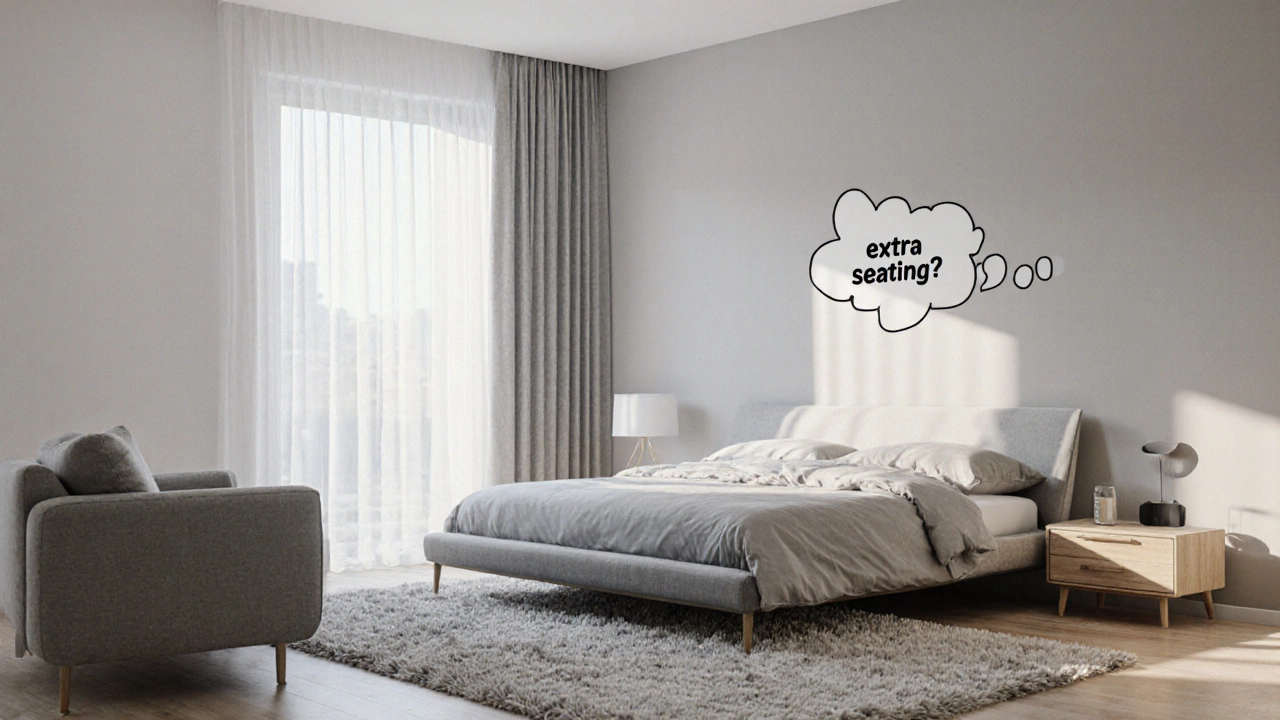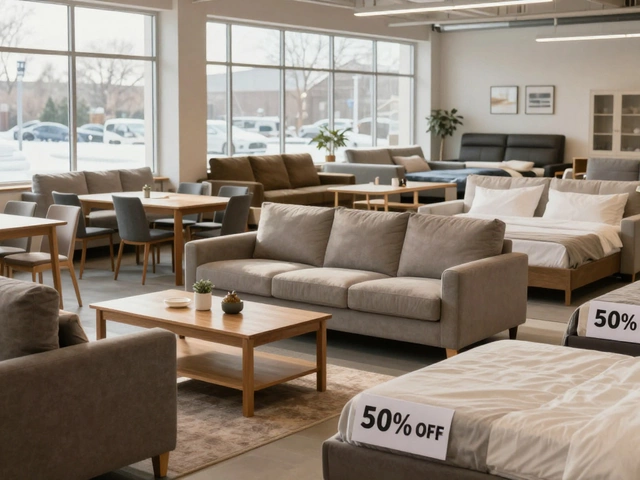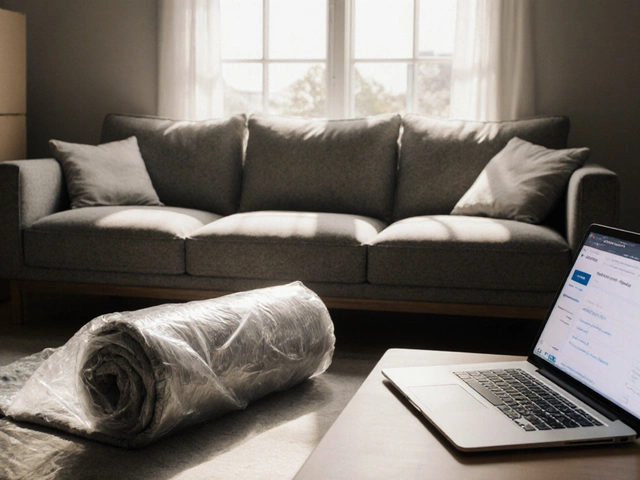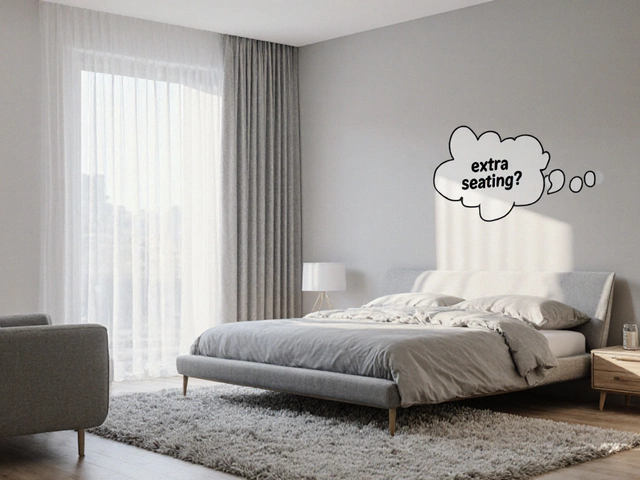Bedroom Couch Decision Helper
Recommendation:
Suggested Couch Type:
Ever walked into a bedroom and wondered if that extra seating could work, or if it would just crowd the space? Deciding whether to place a couch in bedroom isn’t just about filling an empty corner - it’s about balancing comfort, style, and practicality. Below we break down the real reasons a couch might (or might not) belong in your sleeping sanctuary, and give you concrete steps to make the right call.
What a Couch Actually Is
Couch is a type of upholstered seating furniture that typically provides multiple seats, a backrest, and armrests. It is designed for lounging, socializing, or casual seating in living areas. Unlike a single armchair, a couch offers a broader surface for spreading out, making it a versatile piece for various room functions.
Why People Consider a Couch in the Bedroom
There are a few solid motivations that push homeowners toward this idea:
- Extra Seating: Overnight guests often need a spot to sit while they dress or talk.
- Reading Nook: A cozy couch paired with a floor lamp can turn a corner into a mini‑library.
- Work‑from‑Home Corner: If the bedroom doubles as a home office, a couch can serve as a relaxed work surface.
- Style Statement: A well‑chosen couch can become the focal point, adding texture and color.
Potential Drawbacks to Watch
Before you start measuring, keep these challenges in mind:
- Space Consumption: Couches can be bulky, eating up floor area that could be used for a nightstand or walk‑through.
- Traffic Flow: A poorly positioned couch can create choke points, making it hard to get in and out of the room.
- Design Clash: The aesthetic of a living‑room couch might not mesh with a calm bedroom palette.
- Cleaning Concerns: Bedrooms tend to have more dust from bedding; fabric couches can collect allergens.
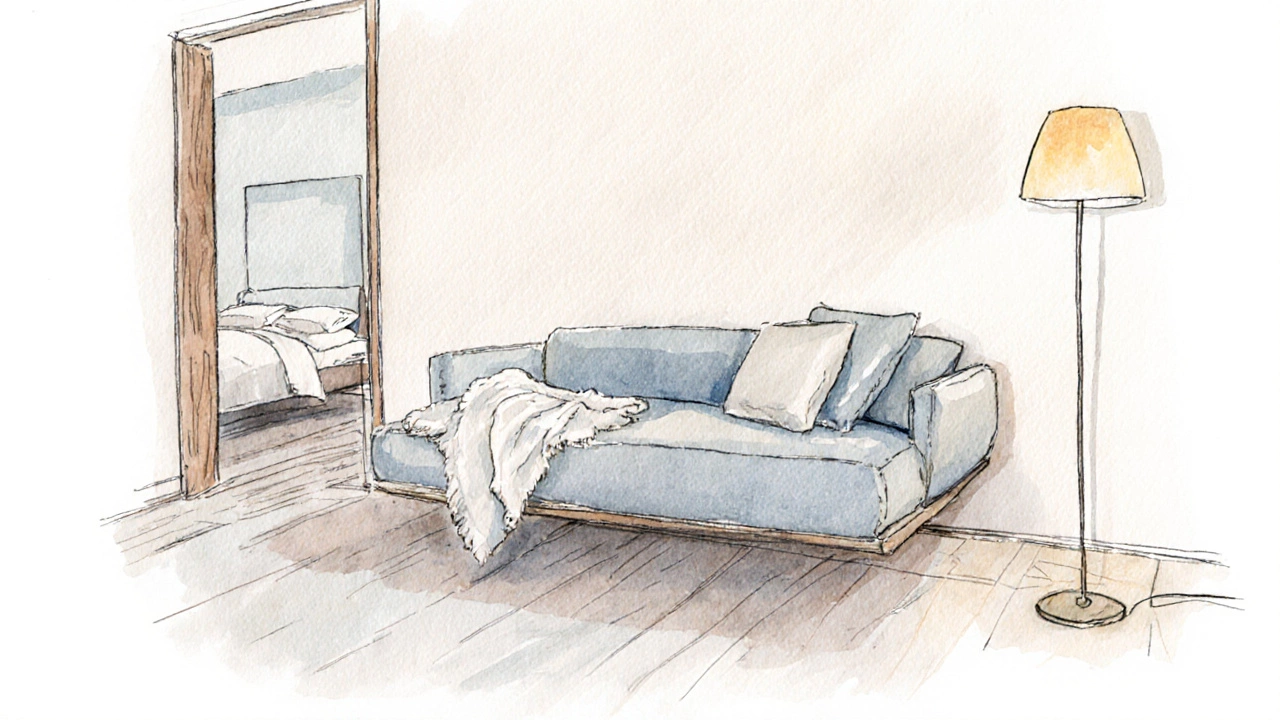
Key Factors to Evaluate Before Buying
Answer these practical questions to see if a couch fits your specific situation:
- Room Dimensions: Measure the length, width, and ceiling height. Leave at least 24‑30inches of clearance around the couch for movement.
- Purpose: Is the couch mainly for sitting, sleeping, or storage? Your answer will affect size and style.
- Existing Furniture: Take stock of beds, nightstands, dressers, and any built‑in wardrobes. The couch should complement, not compete.
- Lighting: Consider natural light patterns. A couch placed under a window might get sun‑fade, while a corner with a lamp creates a cozy vibe.
- Budget & Maintenance: Leather, microfiber, or slip‑cover fabrics each have different costs and care needs.
Choosing the Right Type of Couch
Not all couches are created equal. Here’s a quick guide to the most bedroom‑friendly options:
- Sofa Bed is a dual‑purpose piece that serves as a regular couch and can be unfolded into a full‑size sleeping surface. Ideal for guest rooms where space is at a premium.
- Loveseat is a compact two‑seat couch that offers intimacy without overwhelming the room.
- Modular Sectional can be re‑arranged to fit odd‑shaped rooms, though it often requires more floor area.
- Armless Daybed blends the look of a couch with a built‑in mattress, doubling as seating and a sleeping spot.
Design Strategies to Make It Work
If you decide a couch belongs in the bedroom, these layout tricks keep the room feeling airy:
- Floating Placement: Push the couch away from walls, leaving a clear pathway to the bed.
- Multi‑Functional Furniture: Choose a couch with hidden storage (under‑seat drawers) to replace a separate chest.
- Neutral Palette: Opt for muted fabrics that echo the bedroom’s color scheme, ensuring cohesion.
- Scale Down: A low‑profile couch (seat height under 18inches) maintains a relaxed, bedroom‑appropriate silhouette.
- Coordinate Textiles: Use pillows and throws that match the bedding for a unified look.
Comparison: Couch vs Sofa Bed vs Armchair for Bedroom Use
| Feature | Couch | Sofa Bed | Armchair |
|---|---|---|---|
| Typical Size (L×W) | 72"×35" | 72"×35" (unfolds to 75"×39") | 32"×32" |
| Primary Function | Seating | Seating+Sleeping | Seating |
| Space Needed | Medium‑large | Medium‑large (extra clearance for unfolding) | Small |
| Comfort Level | High, wide surface | Variable - good for sitting, modest for sleeping | High for single person |
| Cost Range (USD) | $600‑$2000 | $800‑$2500 | $200‑$800 |
| Ideal Use‑Case | Socializing, reading nook | Guest sleeping, dual‑purpose rooms | Corner accent, limited space |
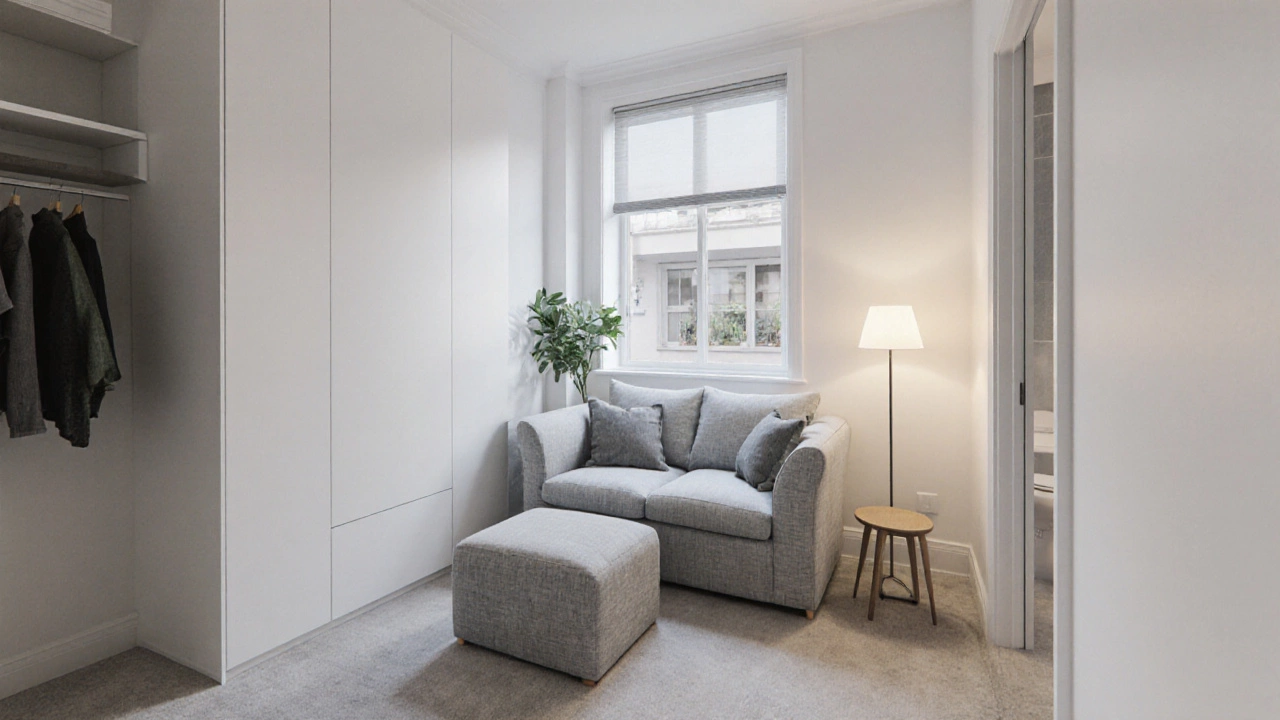
Common Pitfalls and How to Avoid Them
Even the best‑planned couch can turn into a design disaster if you slip up. Watch out for these mistakes:
- Choosing Too Large a Piece: Measure twice-especially if you have a walk‑in closet or built‑in wardrobe on the same wall.
- Ignoring Traffic Flow: The path from the bedroom door to the bed should be unobstructed; keep at least 30inches of clearance.
- Neglecting Light Balance: A dark couch opposite a window can make the room feel cramped; light or neutral fabrics keep it bright.
- Skipping Protective Measures: Use a washable slipcover or choose stain‑resistant fabric if you have pets or kids.
Real‑World Example: A Small Auckland Apartment
Meet Maya, a graphic designer who lives in a 400sqft apartment in Auckland. Her bedroom measured 10ft×9ft, with a built‑in wardrobe on one wall. She wanted a spot to unwind after work and a place for occasional friends. After applying the steps above, she chose a low‑profile loveseat in a light grey linen, placed it opposite the window, and added a small, tall floor lamp for reading. The result? A functional, stylish nook that didn’t block the walk‑through to the bathroom. Maya also kept a slim storage ottoman under the loveseat, eliminating the need for an extra chest of drawers.
Final Decision Checklist
Use this quick list to confirm you’ve covered everything before making the purchase:
- Room dimensions allow for at least 24inches clearance around the couch.
- Primary purpose (seating, sleeping, storage) matches a specific couch style.
- Fabric choice aligns with cleaning habits and light exposure.
- Placement supports smooth traffic flow from door to bed and to any attached bathroom.
- Budget fits within your overall bedroom makeover cost.
Frequently Asked Questions
Will a couch make my bedroom feel smaller?
It can, if you pick a piece that’s too big or place it in a high‑traffic area. Measuring the space, leaving clear pathways, and choosing a low‑profile design keep the room feeling open.
Is a sofa bed a better choice than a regular couch?
If you often host overnight guests, a sofa bed offers the most flexibility. Just make sure you have enough clearance for the bed to unfold and consider the comfort level of the mattress.
What fabric is best for a bedroom couch?
For low maintenance, look for microfiber or performance fabrics that resist stains. If you love a soft, luxe feel, linen or cotton blends work well but need regular vacuuming.
Can I use a couch as a temporary workspace?
Absolutely-pair the couch with a small side table and a laptop stand. A low backrest reduces neck strain, and a plush cushion keeps you comfortable during long sessions.
How do I keep a bedroom couch from gathering dust?
Regular vacuuming with an upholstery brush, using slipcovers that can be washed, and positioning the couch away from direct airflow that stirs up dust help maintain cleanliness.
